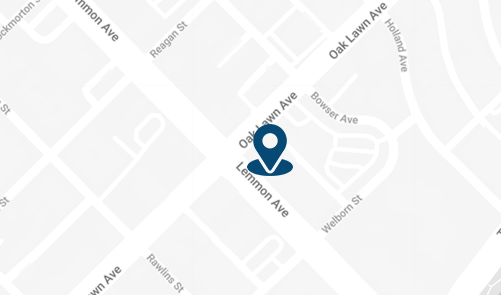By: Dr. Dev Batra | 01.29.23
Your veins transport deoxygenated blood from your body back to your heart. They’re not indestructible, though, so it’s no surprise that sometimes they sustain damage. To that end, you should know the signs of vein damage, so you can get medical help when needed. Without treatment, vein damage can lead to significant and even life-threatening consequences.
Interventional radiologist Dr. Dev Batra at Texas Vascular Institute, with locations in Dallas and Hurst, Texas, knows veins inside and out, and he’s a strong believer in patient education. That’s why he wants to discuss the seven signs of vein damage, so you can be informed and take action when you need to.
7 signs of vein damage
Vein disease progresses in stages. If it isn’t treated, vein disease can become a chronic issue. The seven signs of vein damage include:

1. Chronic venous insufficiency
If the walls of your veins weaken, or if the internal valves become damaged, blood won’t flow back to the heart effectively. Instead, it becomes sluggish and pools around the weakened or damaged area.
If the issue isn’t treated, it becomes chronic venous insufficiency (CVI), affecting about 40% of adults in the United States. Sluggish blood flow can lead to many problems since the tissue doesn’t get the nutrients it needs. Some signs include leg pain, swelling, or slow-healing leg ulcers.
2. Spider veins
These widened veins form due to CVI and increased pressure on the vein walls, showing up in patterns similar to a spider’s web on the skin’s surface.
3. Varicose veins
Spider veins form due to small surface veins, but they can give way to varicose veins as the pressure on the walls grows. These large, colored, and protruding veins on the skin’s surface may be mostly a cosmetic issue, but they can also produce pain, swelling, itchiness, and an aching heaviness in the legs. In addition, they can lead to deep vein thrombosis, which is a significant medical issue.
4. Deep vein thrombosis
Varicose veins affect surface veins, but DVT affects veins deep in the leg tissue. If blood flow is sluggish, it’s more prone to clotting. If a clot forms in the deep veins and breaks free, it can travel to the lungs, where it may become lodged in the airway and cause a life-threatening pulmonary embolism (PE).
5. Edema
If the pressure on the vein walls continues, the veins begin to leak blood into the tissues, causing swelling — or edema — in the area around the weak point. That can lead to itchiness and additional discomfort as debris builds up.
6. Venous stasis dermatitis
If you don’t treat the edema, the skin’s appearance begins to change. Most notably, you’ll see a brown or red discoloration on the lower legs and ankles. The skin also becomes scaly, shiny, and thickened, and you may notice some scarring.
7. Venous ulcers
Venous ulcers are a consequence of vein disease. These open sores on the lower legs or ankles are surrounded by discolored or hardened skin. They’re slow to heal and can easily become infected. While the sore may be relatively painless, you may experience pain from the underlying edema or infection.
Venous ulcers are especially problematic for people with diabetes, who may have lost sensation in their lower limbs (peripheral neuropathy) and may not be aware of the severity of their condition. More than 80% of diabetic lower-limb amputations start with venous ulcers.
If you have any of the signs of vein damage, it’s time to come to Texas Vascular Institute for a consultation with Dr. Batra. Give us a call at either of our locations or book online with us today.

Read more blogs
Varicose Veins in Hurst: Expert Care at Your Doorstep
At Texas Vascular Institute (TVI), we empathize with the discomfort and worry caused by varicose veins. That's why we're here in Hurst, providing cutting-edge treatments that are customized to address your unique needs. With our team of experts wielding extensive knowledge and experience, we promise to provide the utmost care in a warm and compassionate atmosphere. Let us help you find relief and regain your confidence!
Varicose Veins in Dallas: Quality Care You Can Trust
Our exceptional team of vascular specialists are true leaders in their field, armed with years of invaluable experience. Harnessing the power of cutting-edge advancements in vein treatment, they've transformed the lives of numerous patients, liberating them from the pain and unsightly burden of varicose veins. When you choose TVI, you're opting for unparalleled care and unwavering commitment to your varicose vein needs in Dallas.
How to Get Rid of Varicose Veins in Hurst?
The causes and risk factors of varicose veins vary from genetics to age, pregnancy, obesity, and prolonged standing or sitting, among other factors. Some typical signs and possible issues include discomfort, inflammation, irritation, hemorrhage, dermatological alterations, sores, and thrombosis. You may want to seek medical attention if you experience any of the following symptoms or complications.
WHAT OUR PATIENTS
have to say
Texas Vascular Institute always appreciates feedback from our valued patients. To date, we’re thrilled to have collected 378 reviews with an average rating of 5 out of 5 stars. Please read what others are saying about Texas Vascular Institute below, and as always, we would love to collect your feedback.
Leave a Review
Amazing Practice
I'm very particular with my Healthcare and tend to be cautious with referrals to specialists. This office is amazing from the first point of contact. Their staff are friendly, professional and highly knowledgeable. Then the Dr is just as amazing as his staff, absolutely brilliant. Office manager Jessica has this office running like a well oiled machine and does so with a smile, an air of confidence, kindness and professionalism. Love this practice!!
- Richard G.

Beyond Thankful
Dr Batra and his staff are amazing! We are so grateful to have found him. Everyone is so kind and so caring and Dr Batra explains everything so well and does procedures with excellence. Beyond thankful to be under their care!!!
- Bitsy P.

Gold Standard
This is a gold standard for how a medical practice should be run. I was promptly seen at my scheduled time, my ultrasound was thorough and I received plenty of attention and care from the staff and Dr.Batra.
- Weronika L.
INSURANCE
We accept most major insurance plans. Please contact the medical office for all insurance related questions.









3500 Oak Lawn Ave, #760
Dallas, TX 75219
For Appointments: 972-798-4710
General Inquiries: 972-646-8346

809 West Harwood Rd, Suite 101,
Hurst, TX 76054
For Appointments: 972-798-4710
General Inquiries: 972-646-8346

